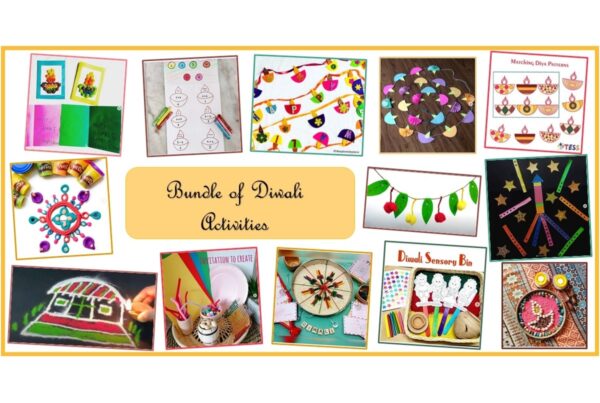
Abacus
Imagine counting or adding in the absence of numbers! Difficult right? Well, early civilizations also found it difficult to calculate sans numbers. This gave birth to the ABACUS. The word ABACUS finds its origin in the Latin word Abax which means something without a base. Well, that’s what the Abacus was then, a counting machine without a base. The Abacus varied from continent to continent and also has different names worldwide. Continue reading to know more about the ABACUS, its history, and its importance…
History of ABACUS
The earliest use of the ABACUS is traced back to 2400 BC. The Babylonians started using it as a counting device. This was a time when written numbers did not exist, which made counting difficult. Hence this counting device was invented. Traders drew a counting board on the sand and placed pebbles to denote numbers. The more affluent merchants didn’t draw on the sand! They used wooden tables with raised borders that were filled with colored sand. These tables were portable and better for use.
Over the centuries, the ABACUS was adapted to the needs and use of people. Many civilizations and countries have used this counting device. Some of them are Mesopotamia, Greece, China, Rome, Japan, Russia, India, Native America, and many more.
The ABACUS is also called differently in different countries. In Japan, it is called Soroban, in Korea, Japan, and Russia it is called Schoty and in China, it is called Suanpan. There is mention of the use of the Abacus in India in some Buddhist texts. But not many references exist for the use of the Abacus in India.
Operations on the ABACUS
The Abacus can be used for all mathematical operations like addition, subtraction, multiplication, and division. The Abacus can also calculate roots up to the cubic degree.
A popular story goes that the famous Physicist Richard Feynman was challenged to Man vs Abacus by a Japanese man. The Japanese man used the Abacus and Feynman stuck to paper and pen. The Abacus user beat Feynman in addition and subtraction. They tied in a division problem. But when they had to find the cubic root of a number, Feynman defeated the Japanese.
So, it proves that the Abacus is indeed a great tool for learning and performing basic mathematical operations with accuracy and speed.
Use of ABACUS in the present day
Today we have numerous modern tools that help us do basic mathematical operations and much more. The most complex of problems can be solved using modern devices. However, many parents still want their children to learn to use the Abacus.
A large number of Japanese children still learn the Abacus. What makes this ancient counting tool so popular? Some of the benefits of the Abacus are listed below.
Aids Cognitive Development
Most children dominantly use the left side of the brain. But it is said that children who use the right side of their brain learn rational and creative thinking earlier. When children learn the Abacus, they move the beads from both sides and usually use both hands for the same. This results in stimulating brain cells on both sides and helps in cognitive development.
Enhances Visualization
Beginners who learn the Abacus, use the board to do calculations. As they are more adept, teachers encourage them to visualize the Abacus board. Thus, children start calculating just by visualizing the board. This is a stepping stone and many children further enhance their visualization and imagination skills.
Enhances Gross Motor Skills
Since children are moving beads every time, they are using the Abacus, their gross motor skills improve.
Makes Math Fun
When children start learning maths, they are asked to memorize the tables. But if your child is learning the Abacus memorizing tables is not needed. They learn the tables by practicing them on the Abacus. Children also understand the concept of multiplication better. Many times, numbers and arithmetical concepts can confuse children and they develop an aversion to the subject altogether. The Abacus looks like a toy with colorful beads and learning maths on that is more fun for them.
Children have Clear Concepts
For excelling in maths, children need to be perfect in the basic concepts. Through the Abacus, children practice the basic concepts very often and also excel in them. This makes them confident and also increases their interest in the subject.
Can be taught to children with special needs
There is a special Abacus for the visually impaired called the Cranmer Abacus. This is used to teach maths to visually impaired students. Children with Dyslexia learn better through touch. It is believed that the Abacus is a good way to introduce maths and mathematical concepts to children with dyslexia.
Practical applications in daily life
Abacus is a skill. What children learn from Abacus can be used practically in day-day living and throughout their lives. In India, Montessori schools use Abacus to introduce mathematical concepts. Older children attend Abacus classes. Though there is no statistic of children learning Abacus in classes, it is said that some institutes train up to a lakh students every year across the country.
ABACUS Tutors from EDUTESS India
EDUTESS India has been teaching students across all grades for the last ____ years. We have trained and experienced tutors who can teach Abacus. We organize both physical (home tutors) and online classes. Unlike many app-based classes, the advantage of classes from EDUTESS is that children interact with an experienced tutor who will be engaging with your child at home or virtually.
EDUTESS organizes small batches (1-6 students) for its ABACUS classes. Having a small group ensures children get individual attention, they can clear doubts, mistakes are identified and corrected and children can learn at their own pace.
For Abacus home tutors CLICK HERE
For Abacus online Classes CLICK HERE
To Connect with us CLICK HERE



